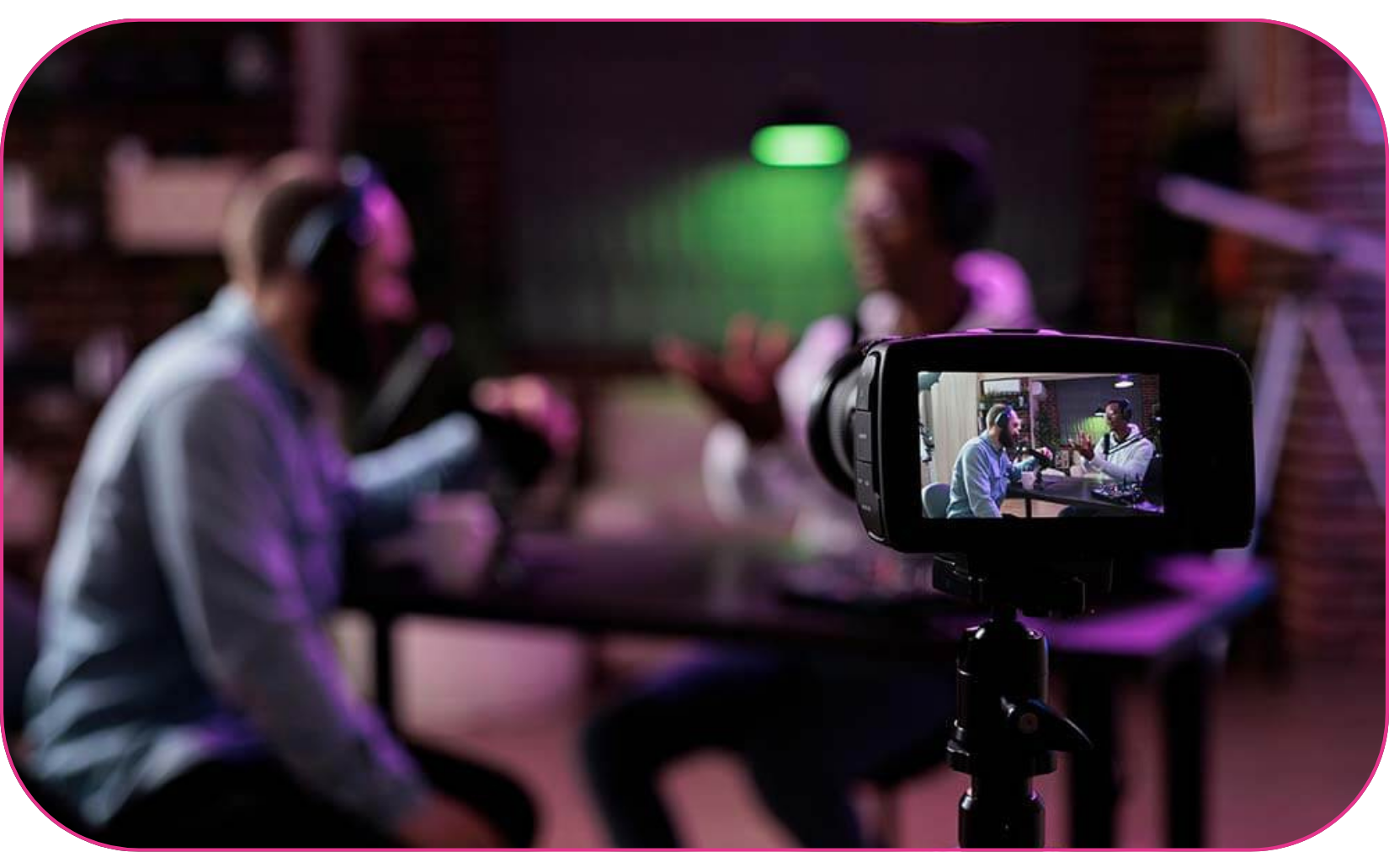Webcasts and podcasts are both effective tools that marketers can use for longform storytelling, establishing thought leadership and generating leads. These two highly shareable and easy-to-consume content formats can catapult your reach into the thousands, or even millions.
Unlike other mediums, webcasts and podcasts can captivate your audience for an extended period of time - usually anywhere between 15 minutes to one hour at a time. If you're interested in diving deeper into podcast creation from webinars, check out our Ultimate Guide to Starting a Podcast from Scratch Using Webinars.
In a world full of character limits and dwindling attention spans (currently around 8 seconds long), the potential to engage with your audience for 15 minutes is a really big deal.
What is a Webcast?
A webcast is a live video stream of an event or conference that includes both audio and visual content. In simple terms, a webcast is a video broadcast of an event over the internet.
If you're picturing a wobbly iPhone video that your friend posted to social over the weekend, that's not quite right. A webcast is a polished, high-quality video that brings an event to life online. Webcasts can be pre-recorded or streamed live.
A Ted Talk is the most recognizable example of a webcast but they can also be used to broadcast smaller-scale conferences, events or even your company town hall.
Benefits of a Webcast
One of the biggest benefits of a webcast is that it allows your online audience to engage with presenters by submitting questions or responding to polls in real time. This helps your online audience feel like they're part of your live event and not just stuck watching it from behind a screen.
What is a Podcast?
Podcasts are pre-recorded digital audio files that people can download and listen to on their phone, laptop or preferred device. Most podcasts are created as an episodic series, but they can also be one-offs or sponsored episodes.
Podcasts have become wildly popular in recent years, with one-third of the US population having listened to a podcast in the last month (that's 90 million monthly listeners).
With podcasts, predictability and consistency are key for your listeners. Each podcast episode within a series should be roughly the same length, released in regularly scheduled intervals (i.e. Thursdays at 6am, or the second Monday of every month), and be produced in the same format, which could be a solo show, co-hosted, interview format, etc. Savvy marketers have started repurposing webinar content into podcasts to help reach new audiences.
Creating a podcast
Like any good story, podcast episodes require a beginning, middle and end. A standard podcast will consist of the following sections:
- Intro music to set the mood of the podcast
- Introduction of topic and speakers
- Deep-dive into the topic of the episode
- The occasional sponsor shout out or advertisement
- Conclusion
- Episode credits
How Are Webcasts Different From Podcasts?
Now that we know what webcasts and podcasts are, let's sort out the differences between them.
The most obvious difference between webcasts and podcasts is that a webcast involves both audio and visual content. Podcasts are just audio.
The next big differentiator is that webcasts provide opportunities for live engagement and interaction from online audience members through the use of polls, live-chat and Q&As. Most podcasts are pre-recorded which leaves little to no opportunity for audience engagement.
When it comes to broadcasting your content, webcasts require a little bit of extra effort compared to podcasts. You may also want to have technical support on-hand to make sure everything runs smoothly.
For a webcast, you'll need to produce professional quality video and audio from a live event environment. And as we all know, anything can happen in a live event environment so invest properly and don't cut corners.
Podcasts on the other hand only require your content and a professional quality pre-recorded audio track. Your recording can be edited, touched up, and even re-recorded if necessary before you broadcast it out to the world.
While these two mediums can be vastly different, one thing they have in common is that they are great ways to get your content in front of your audience. And, if you have the right strategy in place, both can be an integral part of your content marketing strategy.
Want to create a webcast from your next event? Learn how the WorkCast platform can help!
Share this
You May Also Like
These Related Stories

Webcasting 101: How Does Webcasting Work

Webinar vs Webcast: What is a webinar?
.png)

